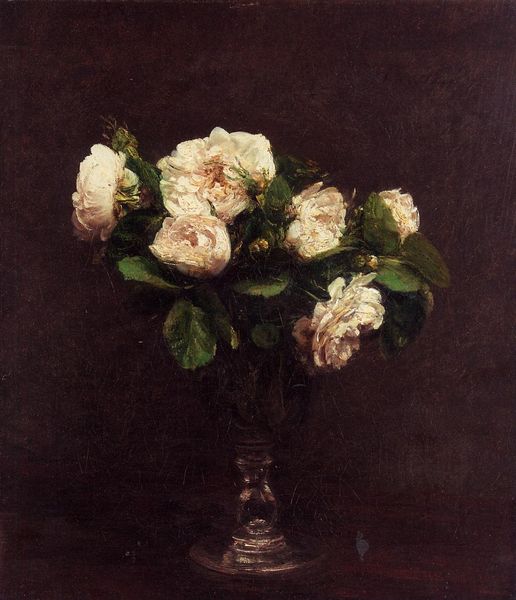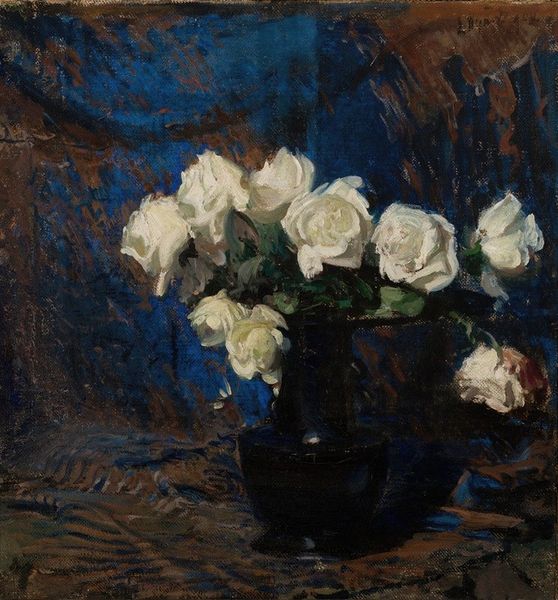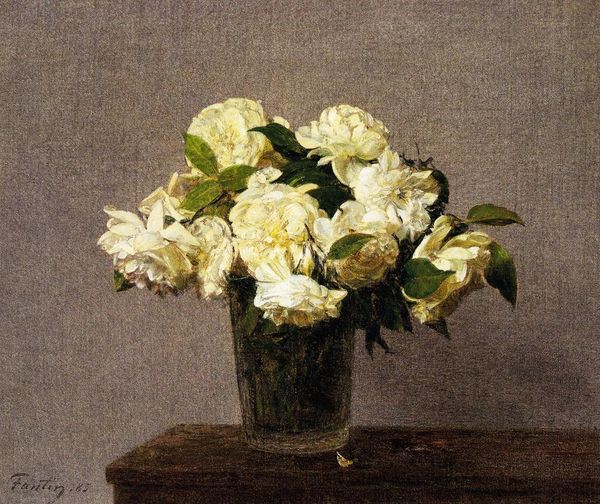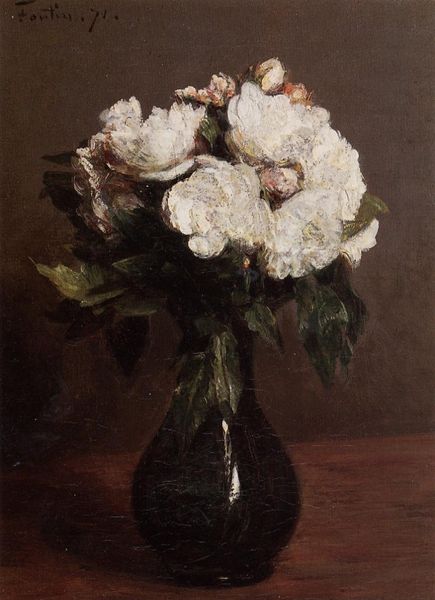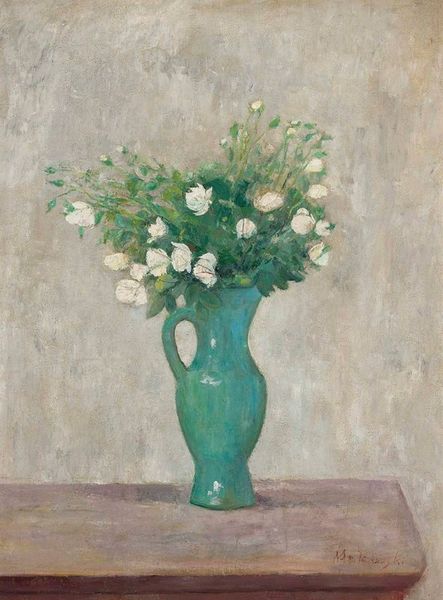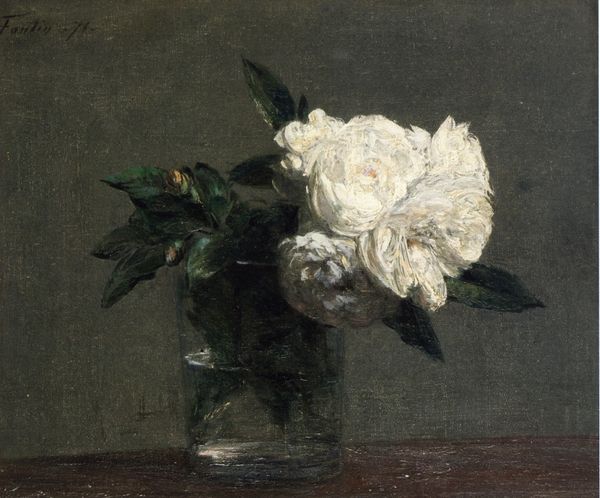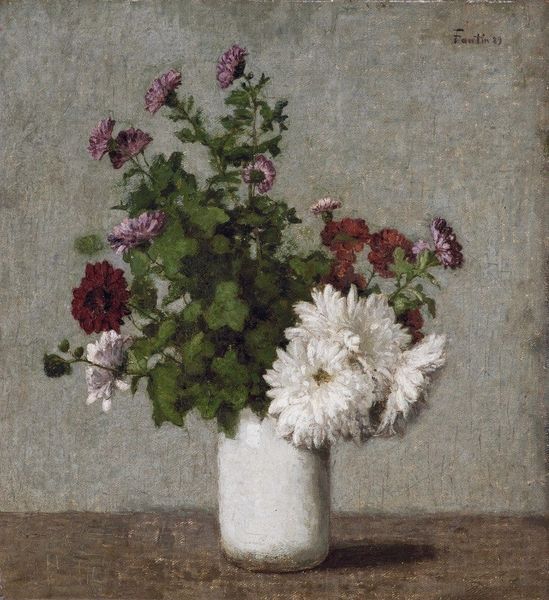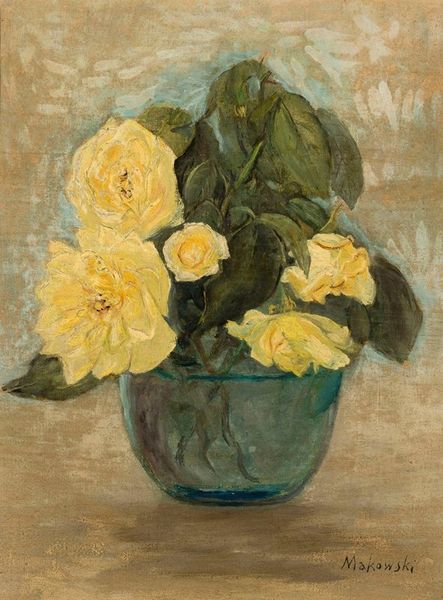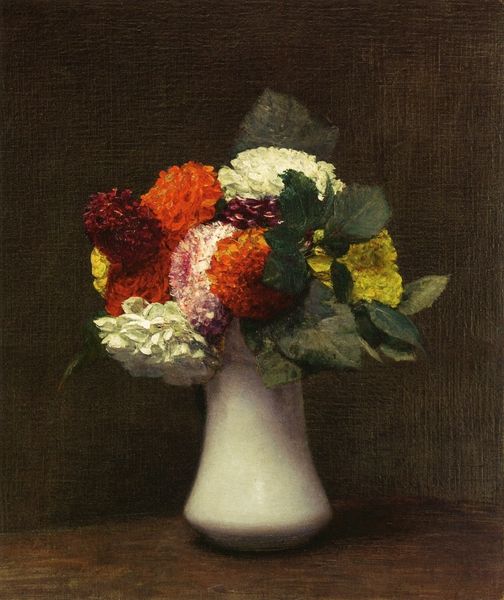
painting, oil-paint, photography
#
still-life
#
painting
#
impressionism
#
oil-paint
#
flower
#
photography
#
oil painting
#
plant
#
realism
Copyright: Public domain
Curator: Henri Fantin-Latour's "White Roses," dating to 1875, presents a seemingly simple subject: a bouquet of white roses arranged in a vase. It's currently held at the York Art Gallery in the UK. Editor: Immediately, there’s a stark contrast. The stark white of the roses is nearly blinding against the somber backdrop. The muted greens in the leaves seem secondary, as if light were carefully captured at specific angles. Curator: Indeed. The formal composition is key here. Observe the structure, how Fantin-Latour has balanced the cluster of roses with the elongated form of the vase, using a low viewpoint. Consider how the texture of the painting enhances the volume of each petal and evokes a softness in the arrangement, achieved through layered strokes of oil paint. Editor: But consider the materiality itself. Oil paint applied to canvas becomes an object, it's constructed and the application seems far from effortless and spontaneous as in some other Impressionists; rather, it is almost painstaking to reflect the bourgeoise aesthetic of that era when the floral arrangement was part of their daily and social habits. How were these roses grown and made accessible to the artist? Who arranged them? These questions are a subtle narrative here. Curator: While the social aspects are intriguing, I argue that Fantin-Latour's intent may have leaned towards capturing an idealized beauty, a fleeting moment preserved. He wasn't interested in mere imitation. Editor: That's a somewhat dismissive reading. The heavy impasto contributes as much to a tactile experience of labor as it does to any concept of idealized form. One can imagine Fantin-Latour applying paint layer upon layer, a process akin to nurturing and carefully handling these objects in order to materialize an artificial sensation that would last more than the flower itself. Curator: Perhaps. Yet, to overemphasize the socio-economic context risks overlooking the work's profound formalism. Fantin-Latour creates a study of light and volume within a very constrained space, using white, and shades of green and dark brown. Editor: True, but these elements are inevitably entangled with a social reality. The artist doesn't paint in a vacuum; the availability of paint, brushes, canvases all speak of production and a very specific audience and their consumption and expectations. It prompts us to consider the social place of flowers at this period. Curator: Ultimately, Fantin-Latour invites us to observe, contemplate, and analyze. This work stands as an investigation of representation in paint and a subtle arrangement of structural principles and relationships. Editor: I agree. Viewing "White Roses" through materiality unveils it beyond a study of form and light, connecting its aesthetic qualities to wider conditions of artistic creation.
Comments
No comments
Be the first to comment and join the conversation on the ultimate creative platform.


